After-School











By Linda Ligon, Family & Kids
Most kids have an occasional day when they decide that they do not want to go to school and will do anything they can to convince their parents to let them stay home. Common tactics include complaining of a stomachache or refusing to get out of bed and get ready. A child may be worried about the first day of school as they may have ‘friend issues’ or have a difficult assignment due.
You allow your child to take a day off and stay home so that you can help him work through his issues, but what do you do when his school refusal becomes consistent? Here are some strategies for helping your child through a period of school refusal and what to do if his felling’s persist.
First, be careful not to dismiss your child’s concern. Instead of quickly making a comment like ‘Don’t worry about that, you will be fine,’ slow down for a moment and listen carefully to what your child has to say. If your child senses you have already passed judgment, he is less likely to want to open up and share his feelings. Your goal is to gently guide the conversation by asking open-ended questions. Even if you see signs that something serious may be going on, such as bullying, avoid aggressively bombarding your child with questions in an effort to quickly find out more information. Your child may feel like you are interrogating him and that you think he did something to cause the trouble to occur.
If you have a strong suspicion that bullying is the cause of your child’s school refusal, do not delay stepping in to resolve the issue. Every child has a right to have a safe environment at school and no type of bullying should be tolerated. You should teach your child how to respond assertively to a bully and stand up for himself, but he should not be expected to
‘just be tough’ and put up with daily incidents of bullying. Report your concern to your child’s teacher, the school administration and the proper authorities, and enlist their help to put a stop to it immediately. Monitoring your child’s activities online and who he is friends with at school can help you spot signs of bullying and give you a chance to stop it before it leads to school refusal.
Refusing to attend school sometimes is a result of academic difficulties. Your child may be behind on his schoolwork and avoids going to school because he could not complete his homework assignment or does not want to take a test. If you regularly monitor your child’s grades and due dates for projects, you probably already have a suspicion about why your child suddenly has a stomachache. Team up with your child’s teacher and other school staff to create a plan for your child’s issues with his schoolwork.
• Create a quiet place for your child to study and avoid distractions.
• Schedule tutoring sessions to help your child catch up.
• Be supportive of your child. Teach him ways to manage stress so that he can better cope when he has difficult schoolwork to complete. If you suspect there may be underlying mental health or medical issues making it difficult for your child to learn, consult a medical professional.
Be patient with your child as you work with the school staff to return him to school. Provide plenty of positive reinforcements when he goes back to school and does a good job coping with any challenges.






Zenimal offers separate models for adults and kids, providing a portable, screen-free way to support mindfulness, relaxation, and better sleep at the touch of a button. Zenimal features 9 guided meditations and 3 sleep sounds, with swappable meditation cards for endless variety.
Join clinical psychologist and mom of three Dr. Becky Kennedy on her weekly podcast, as she takes on tough parenting questions and delivers actionable guidance—all in short episodes, because we know time is hard to find as a parent. Her breakthrough approach has enabled thousands of people to get more comfortable in discomfort, make repairs after mistakes, and always see the good inside.

Daniel J. Siegel, neuropsychiatrist and author of the bestselling Mindsight, and parenting expert Tina Payne Bryson, offer a revolutionary approach to child rearing with twelve key strategies that foster healthy brain development, leading to calmer, happier children. The authors explain—and make accessible—the new science of how a child’s brain is wired and how it matures.
Moshi’s memory, coloring, puzzle and matching games offer positive learning and developmental outcomes, while Moshi’s audio stories were designed to teach the social-emotional skills, breathing and meditation strategies that help with big feelings, challenging moments or difficult transitions.


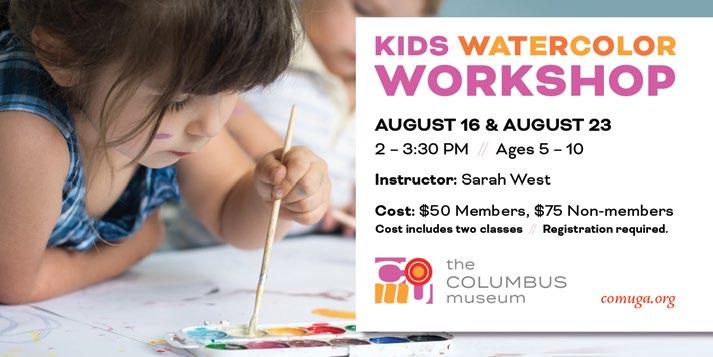


By Linda Ligon, Family & Kids
What is your primary goal for your child’s education? Is it getting good grades, collecting as many awards and scholarships as possible, or participating in as many sports and activities as possible?
Every parent wants their child to grow to be a happy, successful adult. We sometimes ask our child ‘What do you want to be when you grow up’ so that we can help provide him with opportunities that give him a head start on his career path or sports aspirations. However, kids may feel pressured by this question. After all, they have not fully had a chance to explore the world with the open innocence of a child, taking in the sights and sounds of different locations and experiences. Continuously having your mind focused on the future means that you and your child may miss the small enjoyable moments of everyday life and feel anxious about the future.
Here are some ways you can help avoid distracting your child with concerns and worries about the future and stay focused on ‘today.’
Kids can pick up on our emotions and when we feel overwhelmed by a calendar filled with back-to-back activities, we can give off ‘negative’ energy without realizing it. Evaluate your schedule to give yourself more free, unscheduled time to relax and ‘live in the moment’ by exercising and participating in a hobby. Also, try these mindfulness techniques to help reduce the distraction of worries about the future:
g Try to notice your present surroundings, how things smell, feel, sound, taste and feel. For example, slow down when you eat and savor the taste of the food.
g Limit screen time and put away your phone when interacting with others. This will allow you to fully engage in conversations and limit distractions that can keep you from enjoying the moment.
g Try practices such as meditation and journaling. While meditating and journaling, think about what you enjoy about the present and what you are grateful for.
Evaluate your child’s schedule to make sure your child is not ‘overbooked.’ Help your child focus on his favorite sport or activity while leaving some free time for unscheduled play and spending time with the family. This may mean that your child has to choose between his activities to avoid having to run from one practice to another and struggling to finish his homework. Establish an environment that helps promote enjoying the present. Provide opportunities for your child to explore the world around him and to use his senses to enjoy the moment.
g Plant a garden and let your child help care for it. Let him help plant the seeds and then care for the plants as they grow. If you have limited space, set up a container garden on your patio. He will be excited when the vegetables are ready to harvest and he can pick them. Freshly picked vegetables have amazing taste and texture that your child can enjoy.
g Make a trip to a local park or nature trail as part of your routine. Watching the ducks swim on the pond and time on the playground can help your child take a break from the stress of schoolwork and the pressure of performing well at sports practice. Ask your child what kinds of trees and plants he sees and how it feels when he is outdoors.
g Set up a bird-friendly backyard and have fun watching birds enjoy the bird bath and bird feeder. Ask your child to help you keep the bird feeder full of seed and the bird bath clean and filled with the right amount of water. Encourage your child to take note of the different types of birds he sees and what it sounds like when the birds sing.
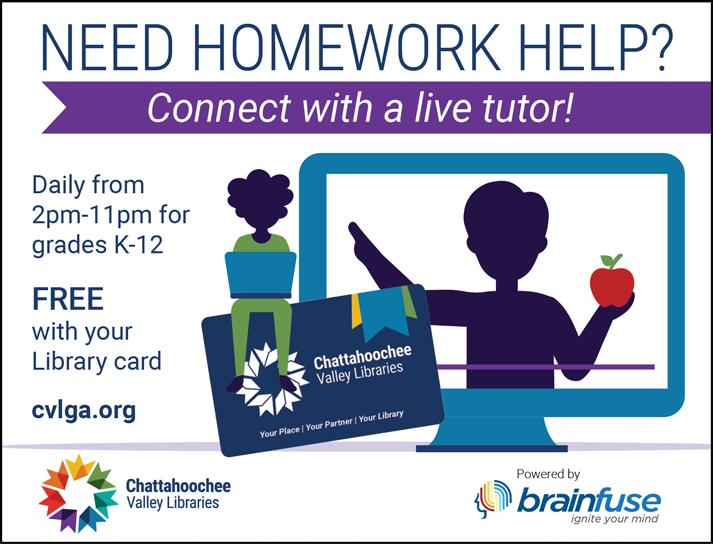
Prader-Willi Syndrome is a genetic disorder that can lead to physical, mental and behavioral issues. This condition is caused by an error in the genes of chromosome 15 which keeps certain paternal genes from being expressed. The genetic errors on Chromosome 15 affect an area of the brain called the hypothalamus. The hypothalamus controls the release of hormones. When the proper release of hormones is disrupted, it can lead to issues with growth, mood, hunger, sexual development and sleep. The genetic error in Chromosome 15 is most commonly the result of a random change in genes and was not inherited.
Some signs and symptoms of Prader-Willi syndrome may be noticeable at birth. One of the major signs is a lack of muscle tone (hypotonia), which can interfere with feeding and cause a poor sucking reflex. The baby may have poor responsiveness, seem tired and have a weak cry. Babies with Prader-Willi syndrome also tend to have distinct facial features, such as almond-shaped eyes, a turned-down mouth, a narrowing of the head at the temples and a thin upper lip.
During early childhood, the lifelong symptoms of PraderWilli syndrome start to appear. These include food cravings
By Linda, Ligon, Family & Kids
and weight gain. A Prader-Willi patient is at risk for obesity and obesity-related health issues, such as diabetes and heart disease, poor growth and physical development. A lack of growth hormone can lead to a short adult height, low muscle mass and high body fat. The sex organs may be underdeveloped. As the patient grows and approaches puberty, puberty may be incomplete or absent, and he may have learning disabilities, cognitive impairment and delayed motor skills. Developmental milestones such as sitting, walking and speech are often delayed and the difficulty speaking and cognitive impairment may last into adulthood. Hey may have issues with sleep, such as sleep apnea, plus behavioral issues, especially when denied food.
Patients with Prader-Willi syndrome are managed by a team of medical professionals that help provide treatments such as weight management, hormone replacement therapy, and various other therapies, such as physical, speech and occupational therapy. There is no cure for Prader-Willi syndrome. Genetic counseling can help parents determine their risk of having another baby with Prader-Willi syndrome.
By Linda Ligon, Family & Kids
Your child comes home sad from school and says, ‘No one wants to be my friend.’ The start of a new school year can be challenging for your child as he adjusts to new classmates, especially if he is also attending a new school. Here are some tips on how to help your child build new friendships if he is having trouble connecting with his peers.
Speak with your child’s teacher to get some insight on how well your child interacts with the other kids. Use the information provided to determine which social skills your child may need to work on. For example, if your child does not seem to have enough confidence to reach out to his peers in an attempt to form friendships, you could build his confidence by role-playing. Practice different situations he may encounter, such as introducing himself to a classmate who is new to the school.
Talk with your child about his feelings and help him develop emotional intelligence Emotional intelligence is vital to forming good friendships. Your child must be able to understand and manage his own
emotions before he can empathize with others. Understanding the emotions of others will help your child resolve disagreements in an empathetic manner and spot when a friend is feeling sad and could use some support.
Provide opportunities for your child to meet new friends. If he finds he has grown apart from his old group of friends, encourage him to participate in after-school activities and youth programs at church and in the community. Joining these programs will allow him to meet kids from other homeroom classes and from other schools.
Most of all, be patient with your child. Some children have an introverted personality, and it takes time for them to develop social skills. However, if your child is struggling to make significant progress towards developing social skills or communication skills, consult his pediatrician. Your child may have a medical issue, such as hearing loss, that interferes with making friends.

Alot of basic skills that were once common knowledge are now deemed old-fashioned or unnecessary, but we shouldn’t be so quick to discard them. If we took the time to learn how to do more for ourselves instead of paying someone else to do it, then we’d have more money, have a greater sense of accomplishment and also know how to fend for yourself if the need arises.
You can potentially get hundreds of tomatoes from one $2 packet of seeds, but how many tomatoes will that same $2 get you from the store? Gardening is a great way to save money if you can keep costs down by growing plants from seed and using natural soil amendments.
Knowing how to preserve your own food is an amazing money-saving skill to have especially when you grow it yourself. It also comes in handy when you can find produce in bulk at rock bottom prices. Canning, freezing and dehydrating are the most common food preservation methods.
Foraging is when you find food that is growing wild like picking berries in the woods or dandelion greens in your backyard. The best way to safely learn about identifying nontoxic edibles is to sign up for a local class or take a course on. Check out Wild Edibles to learn more.
Bartering is when you trade your skills, time or goods for someone else’s instead of exchanging a dollar value. To start, you can find bartering groups on Facebook.
Store-bought meat is expensive and being able to kill your own is a huge money saver! Of course it isn’t free to hunt, but it’s still a good source of quality meat on a budget.
It’s amazing how much money we spend on convenience food. Just think how much you would save if you started making just one new convenience item at home per month.
Sewing handmade garments is normally more expensive than buying off the cheap racks, but having basic knowledge of mending and tailoring can save you tons of money in these services or being able to use clothes longer before buying new ones.
Backyard chickens will produce higher quality eggs with a denser nutrition profile, so it’s not fair to compare the cost of the absolute cheapest eggs that you can find to the price of keeping chickens. You can keep costs down by letting them free range, feeding them kitchen scraps and selling your extra eggs to family and friends. You could also collect scraps from friends or local restaurants to feed to your hens, but make sure they are getting mostly whole foods such as vegetables, grains, etc.
Paying cash definitely seems like an old-fashioned skill these days, but it’s a great one to keep alive! Did you know that people tend to spend more when they use a card verses paying cash? Also, you can normally negotiate on price when you have cash in hand.
Did your TV break? Go buy a shiny new one and put it on the card! Did the car break down? Trade it in for a new one and pay for it later! It seems like our culture tells us we deserve everything instantly, but by doing so we’re missing out on valuable life lessons such as patience, resourcefulness, hard work and gratitude.
Not to mention that delaying gratification allows you to avoid paying interest and save even more money. The next time you want to buy something, ask yourself if you can find it cheaper, make it yourself or go without or better yet try living by the motto made famous by the great depression:
"Use it up, wear it out, make it do, or do without!"

Essential oils can be very effective in deterring bugs of all kinds. While moisturizing your skin with all-natural ingredients, you will also be keeping bugs at bay. Safe for all ages!

Melt all the ingredients, except the essential oils, in a double boiler. You can make your own double boiler by placing a glass bowl over a medium-size saucepan. Bring the water to a boil until the ingredients are melted. Once ingredients are melted, remove the bowl from the heat. Let mixture cool slightly, and then add in essential oils. Stir well until combined. Pour the mixture into silicone molds or metal tins. Allow the mixture to cool completely, and then pop the bars out of the molds. Store in an airtight container for up to one year. If you do get bug bites, you can apply a blend of lavender, tea tree, and frankincense to the area of concern.
Several essential oils can be used for bug repellent, and certain ones work better for certain bugs. Peppermint and eucalyptus essential oils are excellent natural bug repellents for aphids, squash bugs, whiteflies, ants, beetles, spiders, and fleas. Lemongrass can repel flying and crawling pests without harming plants, animals, or skin. This one is great for gnats. A potent repellent for many types of insects, including flies, fleas, and mosquitoes. Clove and thyme work well together for flying and biting insects: like chiggers, ticks, roaches, and flies. Cedarwood is excellent for repelling ticks. Tea tree is another great oil for repelling insects of all kinds, especially mosquitos.
• 1 cup coconut oil
• 1 cup cocoa butter or shea butter (or you can use a combination of the two)
• 1 cup beeswax
• 30 drops of bug repellent essential oils (pick one or multiple oils from the list provided)
• Silicone molds or metal tins
Courtesy of: ouroilyhouse.com
By Linda Ligon, Family & Kids

You are probably familiar with the recommendation to include good sources of fiber in your diet. For adults, doing so can help with conditions such as heart disease and diabetes and aid digestion. But is it also necessary to track how much fiber your child is getting?
The answer is yes, ensuring your child is taking in enough fiber is important. Fiber helps food move through the digestive system properly, preventing issues such as constipation. It can also help protect against cancer and obesity.
What is fiber? Dietary fiber, sometimes referred to as ‘roughage’ is a component of plant-based food that is not digested by the body. One property used to describe a type of fiber is its solubility. Soluble fiber easily dissolves in water and helps soften the stool. Soluble fiber is found mainly in fruits and vegetables. Insoluble fiber, although it does not dissolve in water, can trap water and increase the bulk of the stool, making the stool easier to pass. Insoluble fiber is mostly found in whole grains.
Fiber is also categorized by its ability to be fermented by the bacteria in the gut. Fibers that are soluble, viscous and fermentable can serve as a food source for beneficial gut bacteria which produces shortchain fatty acids like butyrate that serve as a food source for gut cells. Fermentable fiber helps with blood sugar regulation, helps reduce cholesterol and can help with weight management by providing a feeling of being ‘full.’ Studies have also found evidence that butyrate may help protect against cancer. Beans and legumes are the best source of fermentable fiber.
How much fiber is needed? To estimate how many grams of fiber your child needs daily, add 5 to your child’s age. It can be hard to get a picky eater who loves carbohydrates to eat more vegetables. Choose whole grain foods that have 3 or more grams of fiber per serving and offer fruits and vegetables with every meal, including snacks. To prevent stomach discomfort, add fiber slowly, over a period of several weeks and make sure your child is drinking enough water.
Resource: https://bit.ly/4kTcqXuHappy.ai



By Melanie Bartlett, Library Associate,
Back-to-school season brings a mix of excitement, nerves, and big feelings—especially for young readers. What better way to ease those first-day butterflies than with a great story? Books can help children navigate new experiences, understand their emotions, and build confidence for the year ahead.
At Chattahoochee Valley Libraries, we’ve curated a collection of picture books that celebrate school through themes of friendship, bravery, curiosity, and kindness. Whether it’s the fear of being different or the thrill of learning something new, these stories remind kids they’re not alone—and that school can be a whole lot of fun!
Kick off the school year with these picks:
The Crayons Go Back to School by Drew Daywalt
Everyone’s favorite colorful crew is gearing up for class. Each crayon is excited for their favorite subject (hello, art class!) and ready to make new friends in this playful back-to-school tale.
First Day Critter Jitters by Jory John Sloth is worried about being late. Snake struggles with his backpack.
Bunny can’t sit still. Turns out, even their teacher is a little nervous! Together, this lovable bunch helps each other feel brave.
The Nervous Dragon: A Story About Overcoming Back-To-School Worries by DK
Blaze the dragon is anxious about his first day—he still can’t breathe fire and fears he won’t fit in. But with a little courage, Blaze discovers that school is full of unexpected magic.
All Are Welcome by Alexandra Penfold
Step inside a classroom where diversity is celebrated and every child feels safe and seen. This heartwarming story follows students from different backgrounds as they learn together and share their cultures. These titles—and many more—are available at a local branch of your Chattahoochee Valley Libraries. Swing by to discover your next schoolthemed adventure and help your child start the year with confidence, curiosity, and a great book in hand.
Don’t have a library card? Stop by and sign up today. Learn more at cvlga.org.

MONDAY
Sapo’s
5pm until close: free kid's meal with adult entree, dine in only
Tuesday
Chicken Salad Chick
Free Little Chick Meal with purchase of adult meal
Denny’s
4-10pm: Up to two free kids entrées with adult entrée for kids 10 and under
Ruby Tuesday
5-10pm: Kids 12 and under eat free with adult entrée
wednesDAY
Your Pie
Kid's meals half off with adult entree
Red Robin
Kid’s meal half off with adult meal, for kids 11 and under
thursDAY
Tuesday's Street Tacos & Burritos
Free kids meal with adult purchase; dine-in only
All locations are Columbus, GA unless noted. Specials are subject to change without notice, so please verify them directly before dining. Send kids deals to Tammy@FamilyAndKidsGA.com.
friday
Denny’s
4-10pm: Up to two free kids entrées with adult entrée for kids 10 and under
Saturday
The Food Mill
Free kid's meal with any regular priced brunch item from 9am-2pm
multiple days
Bruster’s Ice Cream
Kids under 40” get free baby cone
McAlister’s
Kid’s meals are $2.79 with dine-in order
Smokey Bones
Free kid's meal off kid's menu with adult entrée
Does your restaurant have a special offer for kids?!
Let us know and we can promote it here for free to 20K local parents monthly.
Email it to us at: Tammy@familyandkidsga.com
Yogurt bars are the perfect super quick breakfast for kids. These easy to make DIY yogurt bar ideas are super flexible and can be customized for even the pickiest eater.
1. Spread a thick layer of yogurt on the wax paper.
2. We tried to make the yogurt a little less than half an inch thick but thicker than a quarter of an inch… sprinkle nuts, fruit, extras, etc.
3. Freeze it overnight.
4. In the morning, crack the bar into pieces. Store these in a freezer safe air-tight bag.
5. We drop a chunk of our yogurt bars onto a bowl of granola. Then, munch and go! It is more nutritious than cereal, full of protein and complex carbohydrates, and is sure to keep your kids feeling full longer.
Yogurt is a nutritious and versatile food that offers numerous health benefits for children. Packed with essential nutrients, it supports healthy growth and development while promoting overall well-being. Including yogurt in a child’s diet can be an easy and tasty way to boost their daily nutrition.
One of the primary benefits of yogurt is its rich calcium content. Calcium is vital for building strong bones and teeth, especially during childhood when bone development is at its peak. A single serving of yogurt can provide a significant portion of a child’s daily calcium requirement, contributing to lifelong bone health.
In addition to calcium, yogurt is a good source of high-quality protein. Protein is necessary for muscle development, tissue repair, and immune function. It helps children stay active, supports growth spurts, and keeps them feeling full and satisfied between meals.

• 1 Cup of Greek Yogurt – we use plain and add a teaspoon of honey to sweeten.
• Wax Paper
• Cookie Sheet Pan
• 1 Cup of Toppings
Berries – strawberries, blueberries, raspberries, cherries, cranberries, etc.
Nuts – pistachios, pecans, almonds, cashews
Other ideas – cinnamon, shredded coconut, granola, dark chocolate, raisins, dried cranberries, etc.
Another important advantage of yogurt is its probiotic content. Probiotics are beneficial bacteria that help maintain a healthy balance in the gut. They aid digestion, support immune function, and may reduce the risk of common digestive problems like constipation, diarrhea, and bloating in children. A healthy gut also plays a key role in nutrient absorption and overall health.
Yogurt also contains essential vitamins and minerals such as vitamin D, potassium, and B vitamins. Vitamin D works alongside calcium to strengthen bones, while potassium helps regulate blood pressure and maintain heart health. B vitamins support energy production and nervous system function.
Furthermore, yogurt is a convenient and adaptable food for busy families. It can be enjoyed on its own, blended into smoothies, paired with fruits and whole grains, or used as a base for dips and sauces. Choosing plain, unsweetened yogurt and adding natural flavors like fresh fruits or a drizzle of honey (for children over one) is a healthy way to limit added sugars.

2
Sportsplex Kids Triathlon. Ages 6-15. Opelika Sportsplex & Aquatic Center; sportsplextriforkids.com
2 PTAP Back to School Car Show. 9amNoon. Kids Zone, DJ, Vendors and Raffle. 1231 Broadway; eventbright.com
2 City Market. 8-11am. Town Creek Park, 1150 S Gay St, Auburn; 334-501-2948
2 After-Hours Harry Potter Escape Room. Teen. 6pm. RSVP. North Columbus Library; 706-748-2855
2 Discover Columbus for Newcomers. Columbus Library. 2-3pm. Free.
3 Sensory Sensitive Sunday. 9-11am. Chuck-E-Cheese; 706-568-1813
5 Pony Bead Party. Ages 5-12. 4pm. RSVP for groups of 7 or more. Columbus Public Library; 706-243-2813
5 Little Sprouts. 10:30am. Ages 0-5. $5-$7. Columbus Botanical Garden; 706327-8400
7 Bee-Themed Kids Night. 6-7:30pm. Golden Donut, Wynnton Road; 706-6608783
8 Star Wars Dinner. 5-8pm. Hudson’s On Main, 6298 Veterans Pkwy, Suite 7A. $75 per person. RSVP at 706-507-5384.
9 3rd Annual Hustle For Health Centers 5K Fun Run/Walk & Community Block Party. 7-10am. $35. 1600 Ft Benning Rd; Runsignup.com
9 Junior CEO Expo with Chattahoochee Valley Learning Resource Center. 10am2pm. Bluebelle Market, 2301 Airport Thrwy, Suite A.
9 City Market. 8-11am. Town Creek Park, 1150 S Gay St, Auburn; 334-5012948
9 Pop Up Vendor Market. 9am-6:30pm. Columbus Civic Center; 706-225-4848
9 Princess for a Day. 9am-Noon. $25 + $15. Columbus Convention & Trade Center; 706-327-4522
9 Second Saturday at Pioneer Park. 9am-12:30pm. 6500 Stage Rd, Loachapoka; leecountyhistoricalsociety.org
9 Summer Saturdays. 10am-2pm. $8$12. Columbus Botanical Garden, 706327-8400
10 Fairy Dwelling Workshop. 1-3pm. Ages 5-7. $35-$40. Columbus Botanical Garden, 706-327-8400
12 Simple Steps: Play. Ages 0-5. 10am. North Columbus Library; 706-748-2855
12 Kids Art Studio. Ages 5-12. 4pm. Columbus Library; 706-243-2813
13 MAMA B.E.A.R.S. (part 2) Breastfeeding Support meeting. 12:30-1:30pm. Columbus Pediatric Assoc; 706-221-4602
14 Budding Naturalist. 10-11am. $7. Columbus Botanical Garden, 706-3278400
14 Maker Days. 3-6pm. Columbus Botanical Garden; 706-327-8400
15 Food Truck Friday. 5-11pm. Downtown Opelika; aotourism.com
16
Family Saturday. 10am-Noon. Columbus Museum; 706-748-2562
16 The Columbus Ballet Nutcracker Community Auditions. 1-4pm; thecolumbusballet.org
16 Kids Watercolor Workshop (part 1). 2-3:30pm. Ages 5-10. $50-$75. RSVP. Columbus Museum; 706-748-2562
16 Parents Night Out. 5-9pm. Coaches lead games and activities. $35 with pizza. Momentum After School Program, 6600 Flat Rock Rd; 706-251-8808
16 Community Wide Yard Sale. 9am2pm. Heiferhorn Community 31904.
19
Pony Bead Party. Ages 5-12. 4pm. RSVP for groups of 7 or more. Columbus Library; 706-243-2813
19 Simple Steps: Play. Ages 0-5. 10am. North Columbus Library; 706-748-2855
20 MAMA B.E.A.R.S. Breastfeeding Support meeting. 5:30-7pm. Columbus Pediatric Assoc; 706-221-4602
22
Child Abuse Prevention Seminar. RSVP. Army Community Service Auditorium, 7117 Baltzell Ave, Fort Benning; 706-545-7594

PROVIDED IN PARTNERSHIP WITH:

23
Country Barbeque’s Annual Midnight Express Race. 8pm. 9pm Fun Run, Midnight Race. Free concert. 3137 Mercury Dr, Columbus.
23 Girl Scout Adventure Day for New Girl Scouts! 10am-1pm. Dot’s Little House, 1807 17th St, Columbus GA, 706987-9119
23 Kids Watercolor Workshop (part 2). 2-3:30pm. Ages 5-10. $50-$75. RSVP. The Columbus Museum; 706-748-2562
23 Astronomy Night. 8:30pm. $5 parking. Liberty Bell Pool, F. D. Roosevelt State Park; 706-663-4858
24 Columbus Toy & Comic Book Show. 10am. $6 GA. Coca Cola Space Science Center. 701 Front Ave, Columbus.
26 Simple Steps: Play. Ages 0-5. 10am. North Columbus Library; 706748-2855
26 Kids Art Studio. Ages 5-12. 4pm. Columbus Library; 706-243-2813
27 Seedling Storytime. 10-11am. $7. Columbus Botanical Garden, 706-3278400
27Pasture-Raised Babes Book Club. 6-8pm. Chattahoochee Valley Learning Resource. 900 Front Ave.
27 MAMA B.E.A.R.S. (part 2) Breastfeeding Support meeting. 12:30-1:30pm. Columbus Pediatric Assoc; 706-221-4602
29-31 Labor Day Weekend Hot Air Balloon Show & Glow. Callaway Gardens; 800-CALLAWAY
30 Cool Pool End of Summer Splash. 1-3pm. Regular pool admission + $5 parking. Liberty Bell Pool, F. D. Roosevelt State Park; 706-663-4858
30 Uno, Dos, Tres Craft! Ages 4-8. 3pm. RSVP. Mildred L. Terry Library; 706243-2782
MONDAY
Simple Steps Storytime: Babies & Toddlers. Ages 0-36mo. 10am. Columbus Library; 706-243-2813
TUESDAY
Get On Board With Board Games: Chess & More. Families. 4:30pm. Mildred L. Terry Library; 706-243-2782
WEDNESDAY
Simple Steps Storytime. Ages 0-5. 11am. Mildred L. Terry Library; 706-243-2782
Discovery Hub. Ages 3-5. 11am. RSVP for groups of 7 or more. Columbus Public Library; 706-243-2813
Storytime with Grammy Trish. 11am. Columbus Bound Bookshop; visitcolumbusga.com
THURSDAY
Toddler Tales. 10am. Barnes & Noble Columbus; (706) 653-7880
Simple Steps Storytime: Family. Ages 0-5. 10am. Columbus Library; 706-2432813
LEGOS® in the Library. Families. 3pm. RSVP for groups of 7 or more. Columbus Public Library; 706-243-2813
FRIDAY
Simple Steps Storytime: Rhythm & Rhyme. Ages 0-5. 10am. Columbus Library; 706-243-2813
Market Days on Broadway. 9am-Noon. Uptown Columbus; uptowncolumbusga.com
Toddler Time. 10am-Noon. $12. Ages 5 and under. Launch Trampoline Park; 706-221-8680
SATURDAY
Market Days on Broadway. 9am-Noon. 900, 1000 & 1100 blocks of Broadway; uptowncolumbusga.com
Toddler Time. 10am-Noon. $10. Ages 5 and under. Launch Trampoline Park; 706-221-8680
Chipley Square Farmers Market. 10am2pm. McDougal Ave and Broad Street, Pine Mountain; facebook.com
Please call ahead to confirm event dates, times and age-appropriateness, in case changes were made after the info was obtained.



















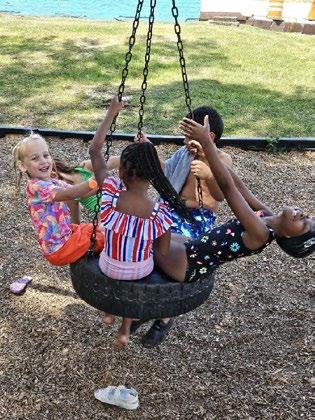

Ages 4-12 years old • Open on school days until 6pm
STEAM-based activities and curriculum
Professionally-trained staff •Snacks and meals provided daily
Income-based pricing from $27-62 weekly
LOCATIONS INCLUDE: Blanchard • Dimon Magnet
Dorothy I. Height • Downtown Magnet • Eagle Ridge
Forrest Road • Johnson • Lonnie Jackson • Mary A. Buckner
Midland Academy • Psalamond Road/ Mathews Elementary Rigdon Road Elementary • South Columbus • Waddell










Since 1997, International Friendship Ministries (IFM), a local ministry outreach has been faithfully bridging cultures and building lasting friendships between the local community and our international neighbors. What began as a mission to share the love of Christ with the international

community has led many to a personal relationship with Christ-equipping them to carry that light into their own nations and spheres of influence. IFM has truly become a “home away from home” for countless international students and families, welcoming them into the community and walking alongside them as they experience a new culture.
Strategically located in Columbus (2308 Hilton Ave), IFM thrives in a city where over 150 nations converge due to the presence of major global industries, educational institutions, and Fort Benning. Each year, IFM reaches over 100


different nations without ever leaving Columbus. As the only organization of its kind in the Tri-City area, IFM offers life-changing programming to families and soldiers alike. Our programs include ESL Classes, Bible Studies, Art Classes, Craft & Sewing, Family & Youth Programs, Music, Drama, and Dance Classes. Our Friendship Partner “opportunities” help many make “forever friends” while they are in our area.
IFM accomplishes this vision through trained teachers, and local volunteers who enjoy sharing their culture and life experiences with the international community. You can be involved in many ways: teaching English, working with the youth and children’s program, serving in childcare, teaching arts and crafts, serving at our summer camps, building maintenance and beautification opportunities and more! To read more about what we offer, please visit our website, at www.ifmga.org. On our website you can enroll
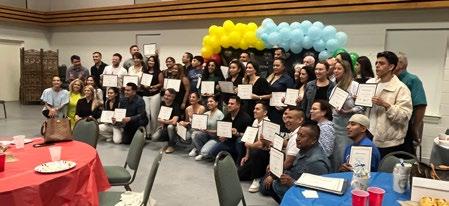

in classes, learn more about IFM, become a volunteer, or offer your financial support. Join us as we build bridges, cultivate friendships, and transform lives across the globe, starting right here in Columbus.
Start Dates for 2025 Fall Classes:
Aug 12: Music
Aug 13: Arts, Ladies Bible Studies, Craft & Sewing
Aug 14: ESL, Family & Youth Programs
Aug 15: Dance





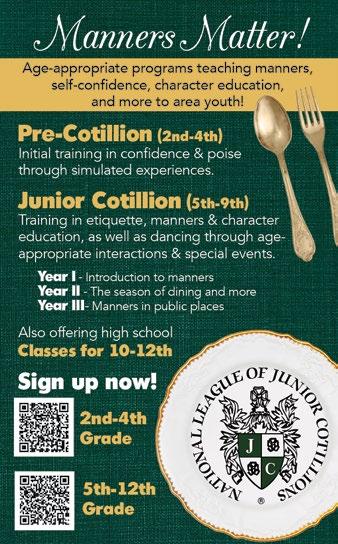








By Linda Ligon, Family & Kids
one fractures are a common childhood injury and occur due to a trauma, such as a fall, sports injury or car accident. While a broken bone can mean having to end a sports season early, the good news is that with proper treatment and a few months of healing, your child should be ready to return to his normal activities.
Bone fractures involve a break in a bone that either partially goes through it (incomplete fracture) or completely extends through it. Incomplete fractures are common types of fractures in children due to the bones of children being softer and more pliable than those of adults. Bones in children tend to buckle or bend before they break, which often leads to a type of incomplete fracture called a greenstick fracture, where the bone bends and cracks on one side. Fractures are also classified as closed or open fractures. An open fracture is when the bone protrudes through the skin, while in a closed fracture does not push through the skin.
Most of the time, pain that is immediate and intense, an obvious deformity and a bone protruding from the skin (open fracture) are definitive signs that your child has a broken bone. Seek emergency medical treatment immediately. Call 911 for situations involving severe symptoms such as an open fracture, your child is unconscious, injuries to the neck, back, head, pelvis or upper leg, severe bleeding, signs of shock, inability to move or if you are unable to splint a severe injury. Sometimes, with less severe symptoms, the situation is not as definitive, and the doctor in the ER or urgent care will X-ray the injury to determine if the bone is broken. An X-ray is the only certain way to rule out a broken bone.
A child’s bone fracture will heal more quickly than that of an adult, thanks to the thick layer of connective tissue called the periosteum. The periosteum surrounds the bone and provides the injury site with a rich blood supply containing healing cells. Also, the bones in kids are still growing and have growth plates (areas of cartilage near the end of long bones) that help accelerate the rate of healing.
• Immediately after the fracture occurs, the cells form a blood clot around the injury and start the healing process. This is called the inflammatory stage.
• Over the next couple of weeks, the periosteum helps deliver cells called chondroblasts that build a temporary bridge of cartilage and fibrous tissue connecting the ends of the broken bone. This is called the reparative stage.
• The soft callus that formed around the ends of the broken bone is replaced over several weeks with hard bone tissue. This process is called ossification.
Early intervention is essential and can help prevent long-term complications from a broken bone. Broken bones are treated with casting or splinting, reduction (re-aligning a broken bone that is out of alignment) and, sometimes, surgery. Surgery may be necessary if the fracture involves a growth plate or a joint. If damage to a growth plate is left untreated, it can lead to bone deformities and limb discrepancies (limbs that are different lengths from one another).
• a deformity or bump that is not usually there • pain • swelling • inability to bear weight
• tenderness – touching the injury is painful • bruising • inability to move part of the body • bone producing through the skin (open fracture) • hearing a snap or grinding sound RESOURCES: http://bit.ly/3I8YsCv and http://bit.ly/44LGNtq


